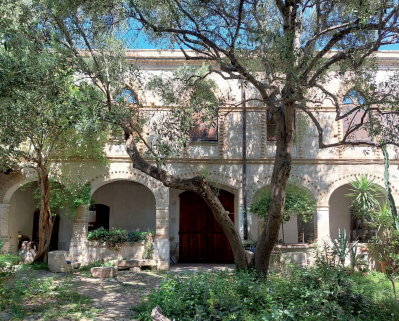Settimo with its nearly 6,000 inhabitants is located on an alluvial terrace overlooking the Campidano di Cagliari. The territory preserves numerous evidences of Neolithic age settlements such as the nuragic complex of “Cuccuru Nuraxi.” Particularly interesting is the old town, which preserves numerous mud-brick buildings. (from the Comunas website)
You can view some of the area’s architectural features divided between churches and Campidanese houses.
Houses dating back to the last century generally have exteriors with an arched entrance portal adorned with artistic friezes or with the initials of the landlord. Inside appear the stable, cellar, porch and courtyard, where there are citrus plants and the ever-present well. The main building built on two floors is made of a mud brick supporting structure and solid brick pillars. The characteristic architectural element is the loggia, better known as “sa lolla,” intended to open the way to all the interior rooms of the house. The roofing of the latter room is made of wooden framework consisting of original beams and tannins, the canes of which are tied individually with vegetable twine to “sa canna maista” that runs in the spacing of “is crabiolas.” Also present in the homes of the better-off was “sa mola,” the millstone for grain. In Settimo San Pietro, the older core is little altered in its environmental characters: the curtain walls on either side of the main routes are rhythmically cut out by the portals of ‘entrance to the courtyard. The load-bearing structures of the dwellings are made of landiri and irregular ashlars of exposed sandstone. The lolle, with round arches, are made of masonry and architraved in juniper wood.


